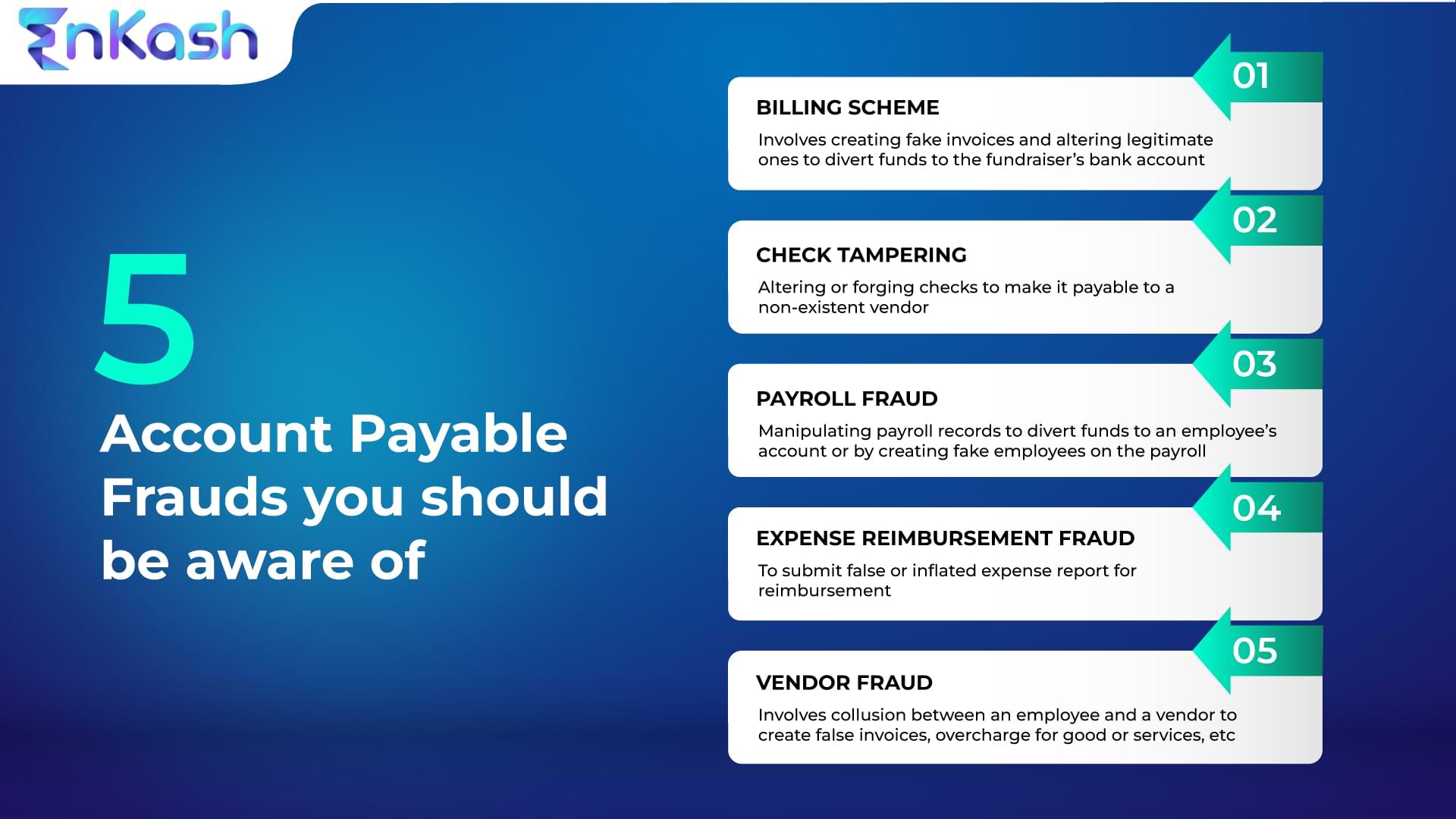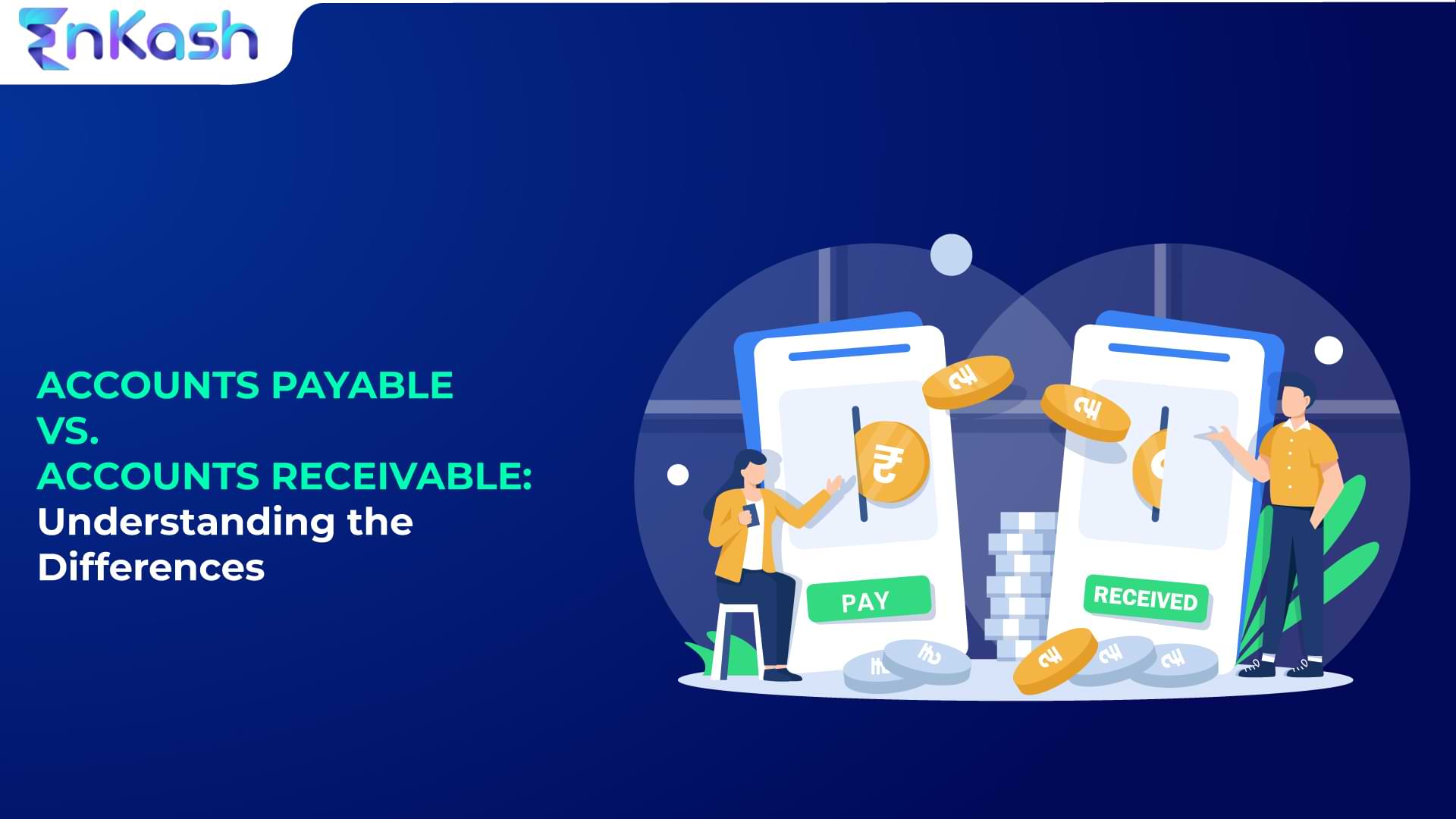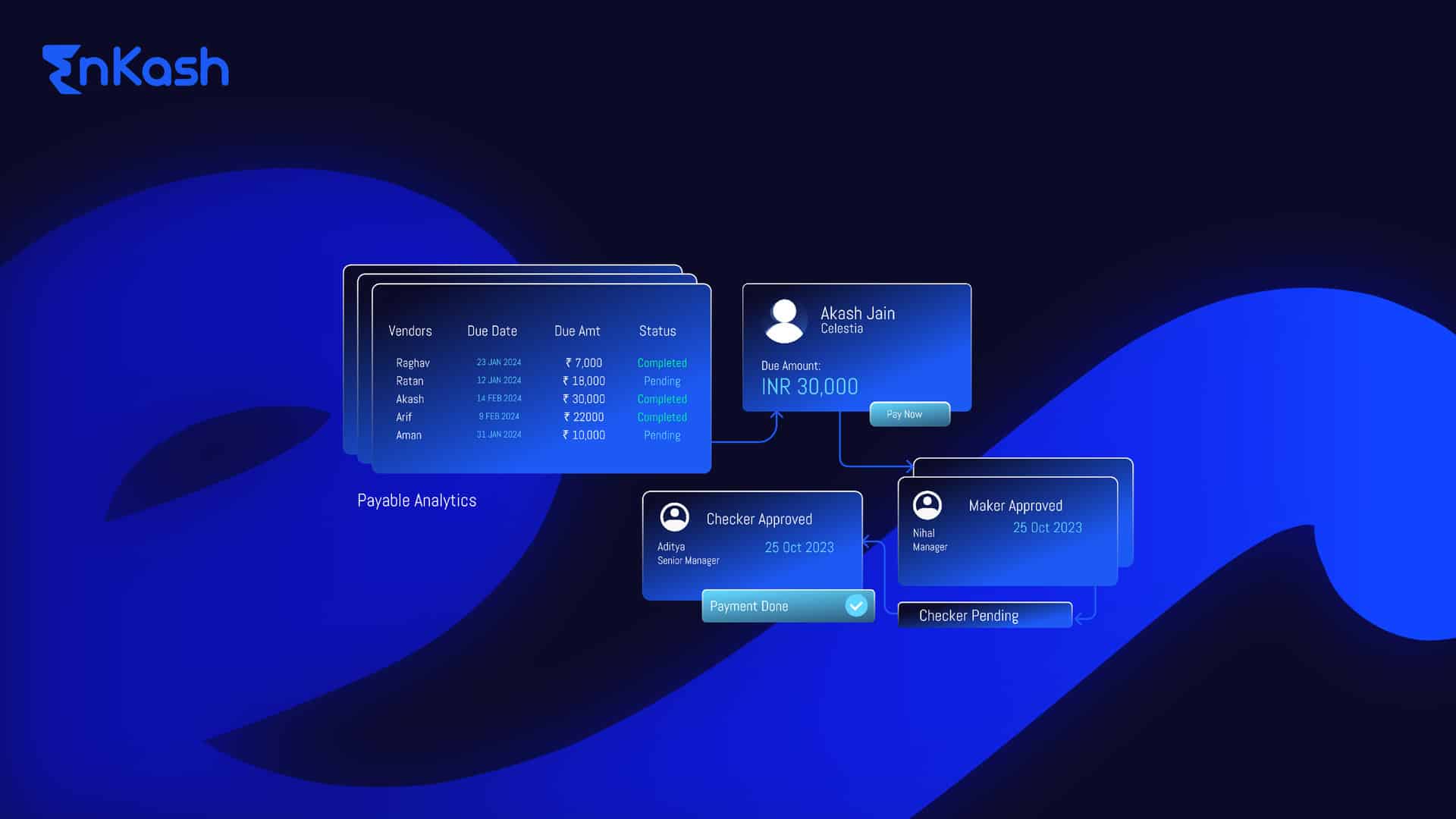Accounts payable (AP) and accounts receivable (AR) are crucial elements of business accounting for any business owner.
Accounts Payable is the money owed to vendors and suppliers by the business. This results in the cash outflow of the business. Whereas AR is the exact opposite, which is the money a business owes to its customers or clients. This results in the cash inflow of the business. To strike a healthy balance between the amount that a business owes and the amount that is owed to a business, it is important to record both Accounts Payable & Accounts Receivable
If you are someone who’s running a business, it is important for you to be well-versed with both these terminologies. Let us dig deeper and understand them, their differences and similarities, with examples that will enable better understanding.
Understanding Accounts Payable
Accounts payable is the amount of money that a business owes to its vendors or suppliers for goods or services that it has received but not yet paid for. This can include things like office supplies, raw materials, rent, utilities, and more. In general, accounts processing represents a liability for the business, as it is money that the business owes to others.
Businesses typically manage their accounts payable using an accounts payable ledger, which tracks all of the bills that are due and the payments that have been made. This allows businesses to stay on top of their financial obligations and ensure that they pay their bills on time. In some cases, businesses may negotiate payment terms with their vendors, allowing them to pay their bills over time instead of all at once.
Accounts Payable Example:
Let’s suppose there’s a Company called A that purchases coffee machines to be set up in four of their office branches. This purchase has been made from Company B on credit with a promise to pay within a month.
Now, Company B will raise an invoice to Company A 15 days prior to the due date of payment. This invoice raised will go to the accounts payable department of Company A, where they will check all the details mentioned. Post that, they will take all the necessary approvals and release the payment as the month ends.
How to record Accounts Payable
The accountant uses the double-entry bookkeeping method to record accounts payable. The entry debits the expenses related to the goods and services purchased and credits the accounts payable with bills and invoices received.
Depending on the nature and scale of the business, the accounting team can categorize and separate total accounts payable into individual accounts.
Understanding Accounts Receivable
Accounts receivable, on the other hand, is the amount of money that a customer or client owes to the business for goods or services that it has provided but not yet received payment for. This can include things like invoices for products or services, outstanding loans, or credit accounts.
An asset for the business, accounts receivable, is the money that the business is entitled to receive in the future.
Businesses typically manage their accounts receivable using an accounts receivable ledger, which tracks all of the invoices that have been issued and the payments that have been received. This allows businesses to stay on top of their outstanding invoices and ensure that they receive payment in a timely manner. In some cases, businesses may offer payment terms to their customers, allowing them to pay their invoices over time instead of all at once.
Accounts Receivable Example:
Suppose there’s a company called X, a furniture manufacturer that delivers furniture to a retail store named Y on credit.
Now, X will raise an invoice in Y’s name for the furniture delivered. In this case, the payment Y owes is recorded under X’s accounts receivable.
Companies provide credit to their customers to establish healthy and long-term relationships with them. This way, the customers also don’t feel burdened to make the payment immediately and can pay on a monthly or quarterly basis as per mutual agreement between both parties.
How to record Accounts Receivable
Accounts receivable is the amount that will be received by the company in the near future, making it an asset.
The accountant makes an entry to debit the accounts receivable account and credit the sales account when recording AR.
Differences between accounts payable and accounts receivable
The most significant difference is that accounts payable represents a liability for the business, while accounts receivable represents an asset.
Another key difference between accounts payable and receivable is the parties involved. The accounts payable process involves the business and its vendors or suppliers, while accounts receivable involves the business and its customers or clients. This means that businesses must manage their accounts payable and accounts receivable differently, as they have different payment terms and deadlines to keep track of.
Finally, accounts payable and accounts receivable have different impacts on a business’s cash flow. The accounts payable process represents a cash outflow for the business, as it is money that the business must pay to its vendors or suppliers. Accounts receivable, on the other hand, represent a cash inflow for the business, as it is money that the business expects to receive from its customers or clients. Managing both accounts payable and accounts receivable effectively is crucial for maintaining a healthy cash flow and ensuring that the business has enough money to operate.
What Do Accounts Payable and Accounts Receivable Have in Common?
Both accounts payable and receivable are crucial financial components of an organization. A company’s ledger has to have entries related to both AP & AR for finance experts to understand the liquidity position.
It is important for a company to have an overview of both in order to get a complete picture of the overall financial health. Both payables and receivables need equal attention so that an accurate record of the company’s cash flow can be maintained.
Importance of accounts payable and accounts receivable
Accounts payable and receivable are both crucial components of any business’s financial management strategy. By managing their accounts payable effectively, businesses can ensure that they pay their bills on time and avoid late fees or penalties. This can help them maintain good relationships with their vendors and suppliers.
Furthermore, effective management of accounts receivable is equally important, as it allows businesses to collect payments from their customers in a timely manner. This can help improve cash flow and reduce the risk of bad debts. In addition, businesses can use their accounts receivable as collateral for loans or lines of credit, which can help them secure additional funding when needed.
Another critical aspect of managing accounts payable and accounts receivable is the impact they can have on a business’s credit score. Late payments or delinquent accounts can negatively impact a business’s credit score, making it more difficult for them to secure loans or lines of credit in the future. On the other hand, businesses with a strong track record of paying their bills on time and managing their accounts receivable effectively can improve their credit score, making it easier for them to access financing when needed.
How to handle accounts payable and receivable
You can effectively manage AP and AR with a platform that helps you automate the process. EnKash Olympus is a full-stack platform that automates finance-related operations and accelerates growth by offering efficiency, transparency, and flexibility.
You can ensure a smooth accounts payable process by purchase orders and supplier invoices linked to team approvals, budgets, payments & accounting.
All the payment-related paperwork is verified with data captured and read accurately. It also ensures the smooth onboarding of vendors. You can easily make single-click bulk payments using various payment modes at your convenience.
With the help of Olympus, you can easily keep track of receivables due and create automatic payment reminders for customers. You can offer bulk collect options and embed payment links in the invoices.
Conclusion
By managing these accounts payable and receivable effectively, businesses can ensure that they maintain good relationships with their vendors and customers, improve cash flow, and protect their credit scores. Whether you are just starting out or are a seasoned business owner, taking the time to understand these concepts and implementing effective strategies can help set your business up for long-term success.
Well, if you wish to know more about accounts-related terminologies, EnKash is where you come. We are a spend management platform that is all set to help you with all your fintech queries and requirements. Our team and software are well-versed to assist you with the best solutions.
Check out these FAQs for any other queries related to accounts payable and accounts receivable:
Where are accounts receivable recorded in the journal entry?
Accounts receivable is recorded as debit as it is an amount owed to a business by an individual or entity.
What is an accounts payable journal entry?
Accounts payable are recorded using the double-entry bookkeeping method. The department receives an invoice, records it as credit in the general ledger, and mentions it as a debit entry in the expense account.
How important is it to manage accounts payable and accounts receivable?
To maintain a healthy cash flow in a business, it is important for a business to manage both accounts payable and accounts receivable. In order to manage both AP & AR, businesses need to maintain a record where they can make all the entries with correct details and at the right time. Any missing entry or discrepancy can lead to mismanagement and reflect poorly on the company’s financial stability.
AR managed well can help reduce the risk of bad debts, timely collection, and reduce the chances of borrowing money for business requirements. AP managed well can help maintain good relationships with vendors and suppliers, which can help one get reasonable pricing and timely shipping along with good quality products.

What are the 4 functions of accounts payable?
The 4 primary functions of accounts payable are — invoice processing, payment processing, record keeping, and vendor management. The accounts payable team is supposed to effectively implement these functions that help companies meet their financial obligations and improve their relationships with vendors and suppliers.
What is the accounts payable process cycle?
The procure-to-pay or accounts payable cycle is a process managed by the company’s purchase and payments department. They carry out all activities from placing an order to the suppliers, purchasing goods, and making final payments to the suppliers.














